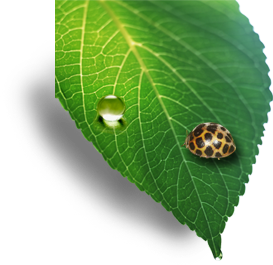People: Current
- Current
- Almuni
Effect of biotic interactions on plant reproductive success
Takashi Y. Ida (PD)
My research involves the ecology and evolution of plant reproductive strategy, but focuses on the mutualism between plants and animals (biotic interaction) and how they shape the ecological and evolutional consequences through the resource allocation and the subsequence reproductive success.
(Key words: biology, ecology, mating system, plants, pollination, reproductive success, resource allocation)
Sex in the community
Shigeki Kishi (PD)
Even within a species, males and females mostly differ in their resource using pattern. This sexual difference can evoke a hypothesis that males and females give different effect on their community. However, there still remain few studies that examined the hypothesis, while most studies of community ecology assumed species-species network, not taking account of sex. Then I'm now studying how sex affects the ecological community structure, by analyzing the network data of flower-visiting insects and flowers.
(Key words: sex, ecological community, flower-vising insects)
The effect of gender dimorphism of flower on flower – insect interactions
Kaoru Tsuji (JSPS PD)
Sexually divided plants have many gender dimorphisms, and the different sex of plants has some different plant-animal interactions. Especially, flowers interact with many insects including pollinators, florivores and predators. Recently, it is revealed that the florivory are very important role on the evolution of flower traits through the indirect interactions. Then, the gender dimorphism of flowers may affect the attracting insects, and it would feed back to plant fitness through direct and/or indirect process. The test of this prediction has just started, and there is a need for more experimental researches. My research goal is to detect an indirect interaction between plant, florivore and pollinators, and to determine which flower trait is the most important in their interactions by using polygamodioecious tree, Eurya japonica.
(Key words: indirect interaction, flower defense, florivore)
The consequences of herbivore-induced change in host plants for coexistence between herbivorous insects
Koya Hashimoto (D3)
Understanding the mechanisms underlying species coexistence among herbivorous insects sharing same host plants is a central issue in ecology. In recent years, it has benn revealed that interactions between herbivorous insects are often mediated by change in their host plant traits after herbivory (herbivore-induced change). The mechanisms underlying that kind of interactions are largely different from classic competitive interactions, whose mechanisms are just scrambling for their resource. When considering herbivore-induced change, competitive interactions between herbivorous insects sharing same host plants are influenced by the plants greater than ever expected. However, examining the influence of herbivore-induced change on the competitive interactions between herbivorous insects is just begining. Further, herbivore-induced change mediating competitive interactions between herbivorous insects may be a novel mechanism of species coexistence.
I use two butterflies (Sericinus montela and Atrophaneura alcinous) sharing a same host plant (Aristolochia dibilis), which in fact are coexisting despite the condition that they can hardly coexist. I want to clarify the interaction between these butterflies mediated by their host plant (Aristolochia debilis) regrowth after herbivory, and examine influence of herbivore-induced change on their competitive interaction. After all, I want to reveal the consequences of herbivore-induced change in their host plant for their coexistence.(Key words: Plant regrowth, Interspecific competition, Population ecology)
Floral traits mediated interaction web: linking pollinators, herbivores and predators
Mito Ikemoto (D2)
Pollination is an important topic in ecology. Many ecologists have mainly focused on direct and pair-wise relationship between pollinators and plants. However, it has been appreciated that foliar herbivory can decrease plant reproduction indirectly through pollinator visitation. Furthermore, florivores and pollinator-predators also change pollinator visitation. To understand what determines number of pollinators and plant fitness, we must know total herbivory effects on not only pollinators but also arthropod communities on the flowers. The purpose of my research is to clarify the interactions of flower associated arthropods community including pollinators and non-pollinators, and to examine the effects of these interactions on plant reproduction.
(Key words: herbivore, florivore, pollinator, predator)
Invasive herbivorous insects as selective agents to defensive traits of an exotic plant Solidago altissima
Yuzu Sakata (D2)
Introduced species often quickly change in terms of genetic variation and phenotypic traits due to adaptive evolution. However, the time scale responding to the trait change after invasion is poorly explored. The recent expansion of an invasive herbivorous insect Corythuca marmorata (lace bug) of the exotic plant Solidago altissima (goldenrod) in Japan provides an opportunity to test the potential of the selective impacts of this herbivore on plant defensive traits.
I am studying how the lace bug affects the defensive traits of the goldenrod in Japan by field survey, common garden experiment and genetic analysis.
(Key words: invasion, plant-insect interaction, evolutionary ecology)
The effect of predator on herbivore-induced plant response by altering herbivore behavior
Shigeaki Hirano (D2)
In the presence of predators, herbivores alter their traits, such as behavior, life history, and morphology, which in turn indirectly influences plants . Recent studies have revealed that presence of predators reduces herbivory by altering behavior of herbivores, focusing on the amount of plants.
I examine the effect of goldenrod spider on herbivore-induced response of willow, by altering behavior of leaf beetle.
(Key words: predator, anti-predator behavior, herbivore-induced plant response, top-down effect)
Effect of herbivore on leaf-transformer through change of plant trait
Yamamura, Shuntaro (M2)
Herbivory alters various traits of plant. These changes influence even what are separated in time and space from herbivores. One of them has a belowground community. Although It has been studies how herbivore affects root herbivores, mycorrhizal fungi, and decomposition rate, hasn’t been researched biota of decomposer. Leaf transformers, one of the decomposer, play an important role in first stage of decomposition. So, I will research herbivore-plant-leaf transformer interaction.
(Key words: decomposition, aboveground-belowground interaction, leaf transformer)


